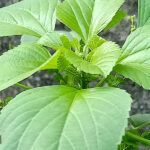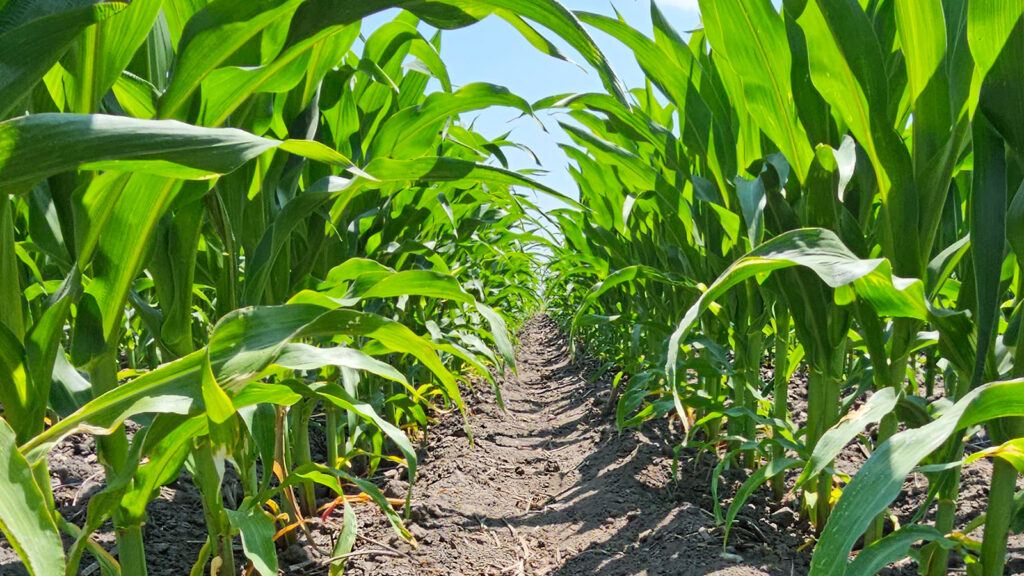Pest Threats 2024: Look Back to Fight Forward
Solutions to this year’s most threatening pests could be found in how last season was managed.

Reach for your trusty Farmers’ Almanac to predict this season’s weather, but turn to Syngenta agronomy service representatives (ASRs) for the latest on this season’s most threatening pests. These ASRs use their regional experience and knowledge to predict which insects, weeds and diseases you should scout for in 2024.
Midwest Growers: Watch Out for Waterhemp and Tar Spot
Indiana
Waterhemp is a driver weed in the ‘Hoosier State’ according to Chad Threewits, Syngenta ASR in Fort Wayne, IN. Poor weed control last year increased this year’s seed bank, he says, adding that Canada thistle and giant ragweed will also be a factor in both corn and soybean fields.
It’s predicted that pre- and post-emergence herbicide applications will be crucial to limiting prolific weeds this season — and are an investment in future crops as well. “Developing herbicide programs that help control these driver weeds not only keeps fields clean this year but helps limit the pressure by reducing the seed bank for the future,” Threewits says.
As in many regions, tar spot is now Indiana’s driver disease in corn. “It’s shown up everywhere in the state, and the severity will depend on summer weather,” Threewits says. Moderate temperatures and wet weather can drive tar spot development, while hot, dry days can decrease its impact. However, don’t bet on the weather to stay on your side.
“The timing of fungicide needs to occur right at the onset of tar spot,” Threewits says. “A lot of growers want to wait, but to maximize yield we can’t let it get ahead of us.”
Some other molds may keep Indiana corn and soybean growers up at night. Ear mold and white mold were big problems in 2023, so they’re top of mind again this year. Threewits also advises soybean growers to keep an eye out for bean leaf beetles and stink bugs, especially late in the season.
Illinois
Illinois growers can expect to battle waterhemp this season according to Kevin Scholl, Syngenta ASR in northern Illinois. “I always say if waterhemp is not your main target weed, it’s going to be. You’ve got to get it under control to have a successful harvest,” he says.
Scholl says waterhemp is a late-season emerger; he recommends a two-pass program with a pre-emergent herbicide followed by an early post-application. “The bigger it gets, the harder it is to kill. That’s why we try to stay ahead of it,” he says.
The top-of-mind disease in corn is, not surprisingly, tar spot. Scholl says northwest Illinois endured one of the nation’s first major outbreaks in 2018, which left a legacy not just in the fields, but in the way growers treat other foliar diseases in corn.
“The 2018 tar spot outbreak changed the way we make recommendations for diseases like gray leaf spot, Northern corn leaf blight and common rust,” he says. While they used to advise tassel to green silks as the best timing for fungicide application and plant-health benefits, Scholl says it now depends on the disease’s timing.
“If tar spot comes in earlier than that timeframe, we need to pull the trigger and spray a fungicide when we see it start to build, especially if the weather conditions are conducive,” he says.
Likewise, soybeans need early intervention to prevent Sudden Death Syndrome. “Sudden Death Syndrome infects the plant early in the season but doesn’t really show itself until the soybeans start to flower,” Scholl says. “For control early in the season, we’ve had very good luck with Saltro® fungicide seed treatment.”
Scholl says the primary insect pest in corn continues to be corn rootworm, which packs a one-two punch by chewing away at corn roots as larvae, then clipping silks as mature beetles. “The beetles lay their eggs in the fall, in corn fields or sometimes in soybean fields, so you can’t really get around this pest with just rotation,” he says. “I advise planting a traited-hybrid seed and applying an insecticide right at planting.”
An insecticide like Force® Evo or Force 6.5G can help protect the corn’s roots. “If you’re losing root mass, you’ll lose the capacity to bring up moisture and nutrients, and that plant’s going to suffer in the end,” Scholl says.
Central Plains Growers: Beware of Palmer Amaranth and Tar Spot
Kansas
The biggest weed threat in western Kansas continues to be Palmer amaranth according to T.J. Binns, Syngenta ASR in Kansas. “It’s a difficult weed to control due to its prolific seed production, rapid growth rate and continuous emergence through the growing season,” he says.
“Palmer amaranth takes work to manage in a perfect year. In 2023, a big hail weather event opened up the canopy late in the season which allowed even more Palmer to go to seed,” Binns says. “So, we’re expecting it to be an even bigger challenge in 2024.”
All Kansas row crops are affected by Palmer amaranth, but Binns says it’s especially damaging in grain sorghum (milo). “In milo, there really aren’t any herbicides to control Palmer amaranth once they emerge. It’s a helpless feeling when it happens,” he says.
To limit weed impact in corn and soybeans, Binns recommends robust rates of pre-emergence herbicides followed by early application of overlapping residual herbicides before the weed comes up.
“We’re moving in the same direction with milo — overlapping residuals and a quality pre-emergence product,” he says, adding that in this crop, timing is crucial. Binns also notes a warmer-than-normal spring could cause Palmer amaranth to emerge earlier than usual in all crops.
Wheat growers will want to be mindful of stripe and leaf rust, along with Fusarium head blight (FHB), which could undermine a promising crop. “FHB has become more common in the last few years and a lot of growers were caught by surprise with the amount of infection in 2023,” Binns says.
Growers impacted by FHB last year have already taken steps to protect against it in 2024 by making variety selections that offer higher levels of tolerance for the disease. “Variety selection is the first step,” Binns says. “But even with variety selection, they need to be considering a Miravis® Ace fungicide application, ideally at bloom if the weather conditions are conducive for FHB infection.”
Binns also advises growers to be aware of rust progression from the south and start preventative fungicide applications as soon as the flag leaf is 50% emerged — before the rust lesions appear on their wheat.
Nebraska
ASR Travis Gustafson’s territory, Nebraska, has a lot in common with neighboring Kansas. Palmer amaranth is a big concern in both corn and soybeans, and control depends on pre- and post-emergence herbicides if growers want the upper hand.
In corn, Storen® herbicide has performed well in demo trials for the last couple of years, Gustafson says, and he expects it to be a premium choice for managing Palmer amaranth in 2024. For soybeans, he recommends growers rely on Group 15 residual herbicides to control the pest, such as Boundary® 6.5 EC, Tendovo® and BroadAxe® XC.
“These herbicides provide great small-seeded broadleaf residual control early in the season and provide a foundation for more residual activity with post-emergence applications,” Gustafson says. He adds that it’s important to use residual products in both pre- and post-emergence applications to hold back later-germinating Palmer amaranth before the soybean canopy closes.
Gustafson warns Nebraska corn growers to be on the lookout for tar spot. Last year, tar spot showed up late in Nebraska and had no impact on yield — but now that it’s here, growers must be more vigilant.
“Be more observant of tar spot lesions throughout the season,” Gustafson says. “We’re also watching out for southern rust, northern corn leaf blight and gray leaf spot.”
Miravis Neo and Trivapro® fungicides have built a reputation for high performance in the field for control of tar spot and other fungal diseases, he says. As fungicides with exclusive active ingredients ADEPIDYN® or SOLATENOL® technology respectively, Miravis Neo and Trivapro can also help the crop through stressful situations, like drought, by delivering plant-health benefits during grain fill.
Mid-South Growers: Prep for Aphids, Stink Bugs and Palmer Amaranth
Kentucky and Tennessee
Aphids and Fusarium Head Blight (FHB), the fungal disease also known as head scab, are the pests to watch out for in wheat this year according to Sarah Gehant, Syngenta ASR for Kentucky and western Tennessee.
“CruiserMaxx® brand seed treatment controls fall aphids and should be followed with Warrior II with Zeon Technology® insecticide in the spring,” Gehant says. She advises the importance of controlling aphids all season long, as they can transmit barley yellow dwarf virus in cereals, damaging both yield and quality.
An expanding weed pest in the region is ryegrass. A successful burndown program is critical for getting this weed under control. Gehant recommends an application of Boundary herbicide coupled with Gramoxone® SL 3.0 when going to soybeans or an application of Sequence® herbicide when going to corn or soybeans. Both programs provide residual control, so it is an excellent foundation to setting growers up for success.
Kentucky’s insect to note is stink bugs in soybeans. “Stink bugs were bad last year and we expect it to be worse this year,” she said. “Endigo® ZCX insecticide will do a great job when combined with Miravis Top fungicide at R3.”
Mississippi
Despite its diverse cropping system, which includes cotton, sorghum and rice, soybeans are still the biggest crop to be found in Mississippi, with more than two million acres planted. Palmer amaranth is the big weed to watch out for, according to Tripp Walker, Syngenta ASR in Mississippi.
“The direct weed competition is the biggest issue, because it develops right along with the crop,” he says. “So, we’re trying to avoid those competition-type losses. In a worst-case scenario, failure to manage Palmer amaranth can result in direct crop loss.”
The Mississippi weather promotes disease pressure including frogeye, septoria and target leaf spot in soybeans. Walker says reproductive-stage growth applications of Miravis Top provides good contact and residual control of a host of foliar diseases.
Stink bugs in general, and red banded stink bugs in particular, are at the top of Walker’s insect-threat list for 2024. “Stink bugs feed on the developing seeds, so it is a direct crop loss,” he says. “But the Endigo ZCX premix provides both contact and residual on red banded stink bugs, as well as other stink bugs and insect pests we see in soybeans.”
- Timely herbicide applications manage driver weeds and reduce future pressure.
- Regularly scout fields and communicate with neighbors to catch disease early.
- Many regions should prepare for a tough stink bug season, which is expected to be worse than last year.























